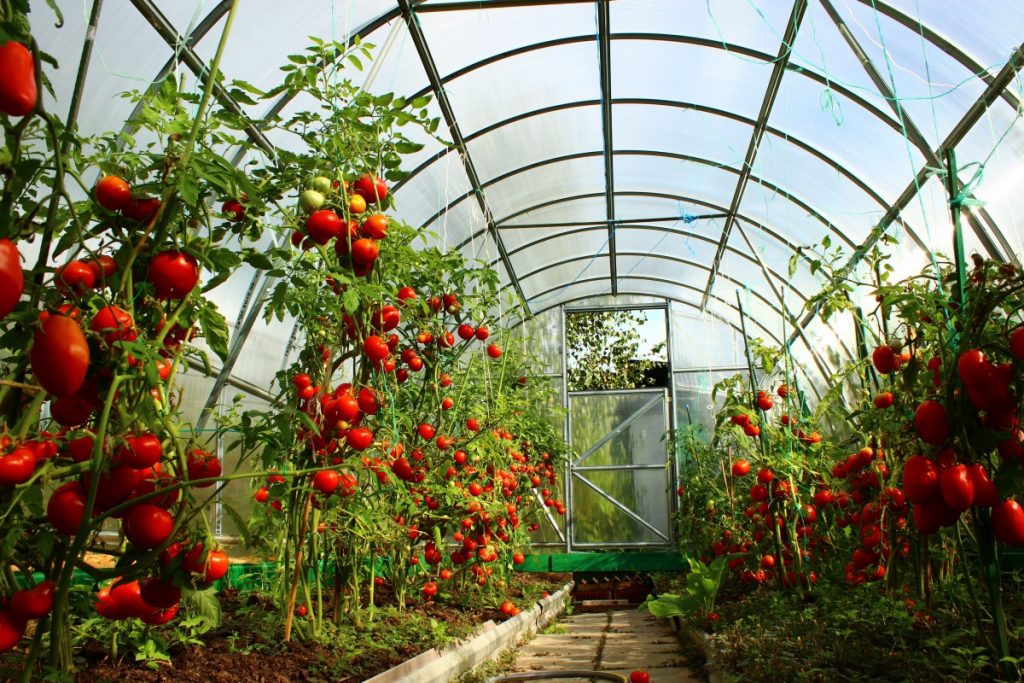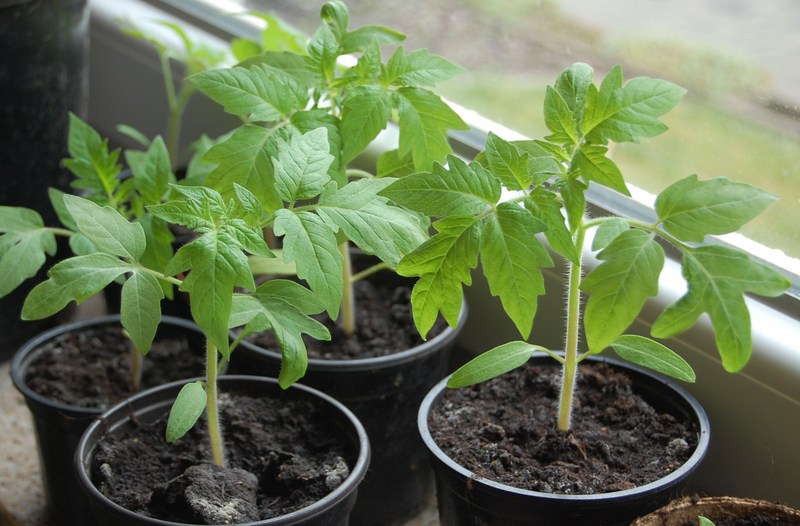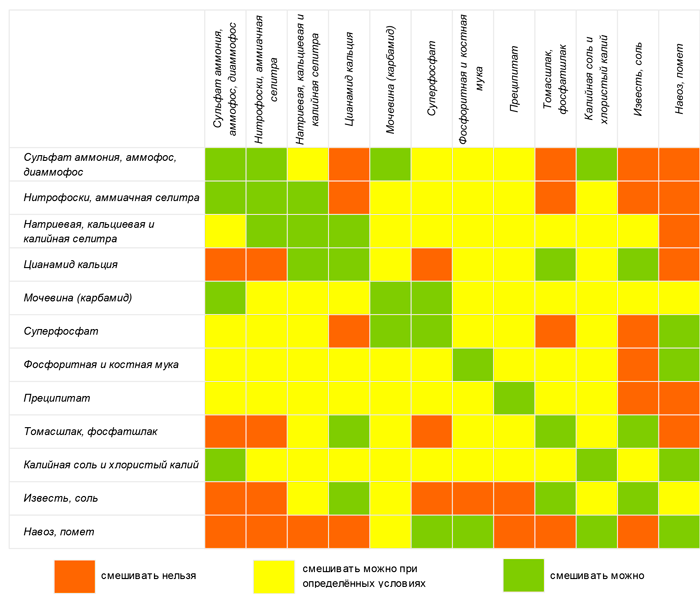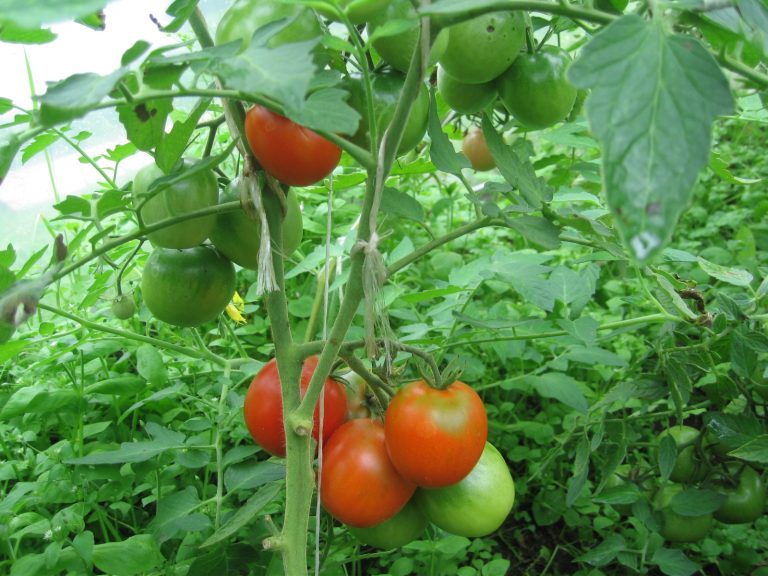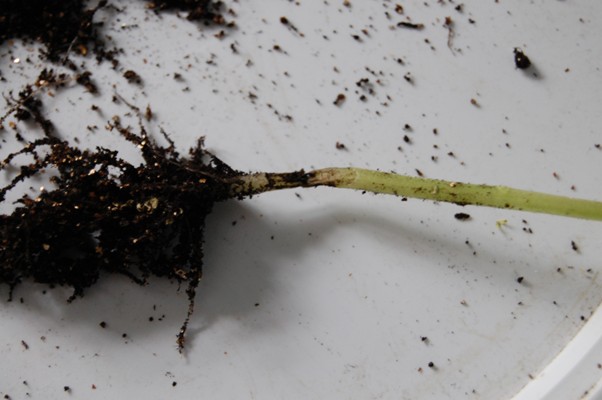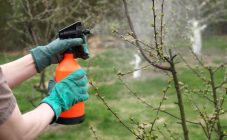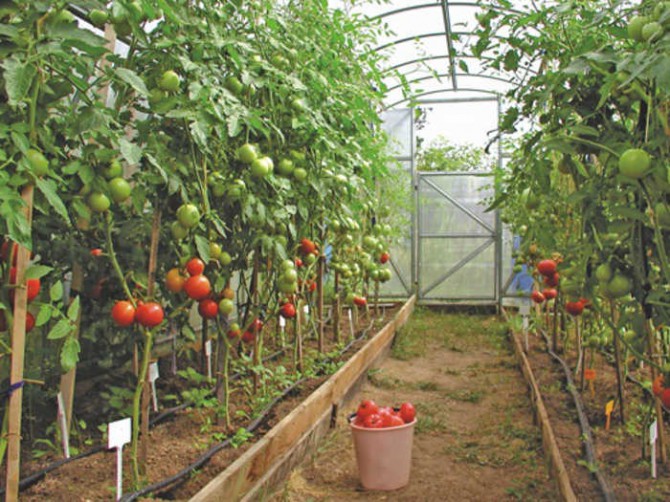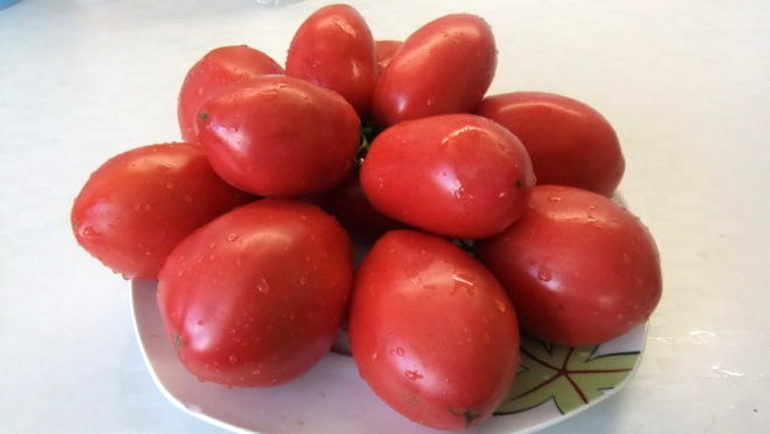Tomatoes are a popular vegetable crop in all countries. In the south, it can be grown outdoors, in areas with a temperate climate, the variety of varieties and the ingenuity of vegetable growers also allow for large yields. Due to their taste and versatility of use, tomatoes are grown everywhere.
There are varieties for growing:
- in greenhouses;
- in greenhouses;
- in the open field.
By type of growth, they are divided into:
- Indeterminate. These are tomatoes with unlimited stem growth. Plant height can be up to 2 meters or more. Varieties that need a lot of heat and time to ripen are mainly used for greenhouse cultivation. The greenhouse is also used in areas with unstable climates and short summers.
- Determinant. They are also sometimes called standard. The bush does not grow taller than 60-70 cm. Comfortable compact bushes are grown most often in open ground or in low greenhouses. They do not need to be tied up.
The greenhouse is used as a temporary shelter to protect plants from late spring frosts.
In open ground, tomato seedlings do not withstand frost and are planted depending on the weather conditions of the region.
The sooner the tomatoes are sprayed after planting with Epin, Zircon or HB-101, the better they will take root.
To grow a good harvest of delicious tomatoes, you need to know the rules of caring for the plant throughout the growing season. They need:
- Spraying against diseases.
- Pest control.
- Top dressing.
- Stealing.
- Loosening of the topsoil.
- Weed removal.
- Spraying flowers to improve the ovary.
What, when and how to spray tomatoes
Plant processing begins immediately after the seedlings dive.
Chemical treatments
Small plants transplanted into separate pots must be sprayed with Epin or Zircon solution for better survival. Each leaf should be sprayed completely on both sides.
Two weeks after the picking, the tomatoes must be fed with potassium humate or water-soluble mineral fertilizer for seedlings such as Fertika or Aqua. This can be both root dressing and spraying tomatoes with a solution of the drug. A solution of humate is prepared according to the instructions or at the rate of one tablespoon per 5-6 liters of water.
Before planting seedlings in open ground, foliar feeding with potassium humate can be alternated with root watering no more than once every two weeks.
Immediately after planting in the ground, the plants must be treated against a dangerous disease - phytophthora. This is done by spraying with preparations "Fitosporin", "Hom". You can also use copper sulfate.
Two weeks after planting the seedlings, it is necessary to decide how to spray tomatoes from diseases during the entire growing season. Tomatoes need disease prevention every two weeks until the fruit is poured. Vitriol is generally recognized as the best remedy for a complex of diseases.
An alternative will be the drug "Abiga-peak". The base also contains a copper compound, but is more convenient to use.
Preventing pest attacks helps ensure a good harvest. In the fight against insects will help such drugs as "Iskra Zolotaya", "Aktara", "Aktellik". Spraying should be done if rain is not expected.
In greenhouses, spraying against pests is carried out more often. Prevention must also be carried out before planting seedlings, since spider mites multiply very quickly in greenhouse conditions. From time to time, the entire greenhouse must be treated with Actellik before the planting season.
Pest control is carried out for prevention once every two weeks. With their direct appearance, it is necessary to process it every evening until the insects disappear completely.
During flowering, tomatoes are sprayed with the "Ovary" preparation, which helps to set fruits in adverse weather conditions.
Prolonged rains have a bad effect on the condition of the plant, especially if cold comes after them. Plants weaken, they have to be stimulated and healed. In this case, the use of tank mixtures helps to spray tomatoes after rain. This is the name of the drugs mixed in one container against diseases, pests and growth stimulants.
Spraying with drugs implies a waiting period during which tomatoes cannot be eaten. Sometimes a pest or disease affects a bush that contains both ripe and green tomatoes. How to spray tomatoes, if the fruits are already ready for use, will be described later.
Spraying with folk remedies
Many vegetable growers prefer the folk experience gained over many decades to chemical measures to combat diseases and pests:
- As a preparation for disinfecting soil before planting or sowing, ordinary potassium permanganate is widely used. The spray solution should be a deep deep pink color.
- After sowing, shoots appear within a few days. They must be monitored so that the stem is not damaged by the disease. A black coating on it means that urgent action is needed. Disease "black leg" often ruins all undertakings in the bud, and it is very difficult to fight it. The faster you spray tomatoes from this disease, the more chances you have to keep the seedlings. Against this disease from folk remedies, you can use baking soda. Spraying with a saturated solution weekly at the rate of one tablespoon per 100 ml will prevent disease.
- Pest control, such as black midge, is possible with the help of garlic infusion. Five cloves of garlic need to be grated on a fine grater or squeezed through a chopper. Then 500 ml water and two tablespoons of green soap are added to the mass. All this is thoroughly mixed, infused for 2 hours and filtered. This solution needs to be irrigated with tomatoes and the more often, the better.
During the cultivation of tomatoes, top dressing can also be produced using folk remedies. Spraying with a drug such as boric acid throughout the growing season makes the plant more resistant to disease. Spraying frequency - 2 weeks.The solution is prepared from dry powder, the proportion is 1 g of the drug per 1 liter of hot water. After the liquid has cooled down, the plant can be treated by spraying.
Regular iodine is also a useful drug. Enough 10-15 drops per 5 liters of water. The plant can be sprayed with this solution every week, so that the question does not arise about how to spray tomatoes from diseases.
Outdoors, rain is not always helpful. Frequent and prolonged summer rains are a threat to plants. If it rains for a long time, the plants weaken and are more susceptible to disease. A folk remedy can protect them. For its preparation, milk whey is used in the amount of 2 liters. It needs to be diluted in 10 liters of water and sprayed on each tomato bush.
Spraying rules
There are some rules to follow when working with plants:
- Spraying is done in dry weather. After it, at least 2 hours must pass for the effect of the drug to take hold.
- Early morning is not a very good time to spray. The dew has not yet dried on the plants, the preparations will be ineffective due to the poor absorption of the plant.
- The best time to spray is from 17-00 to 22-00.
- The absence of strong wind is desirable if the procedure is performed outdoors.
- Tomato bloom lasts a little over a week. During this time, spraying is best done two or three times.
Armed with knowledge, you can go on the road for a harvest of fragrant juicy tomatoes.
